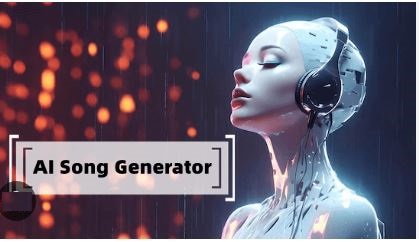Stories you may like
Meet the 16-year-old using AI to diagnose arthritis in canines
During a family trek last year, 16-year-old Anshul Bhatt noticed something unusual about his pet dog, Max. Normally energetic and eager to leap into water, Max was limping and licking his paws in pain.
A visit to the vet revealed late-stage arthritis, which was too advanced for any effective treatment.
The experience proved to be a turning point for Bhatt. “It was heartbreaking to see Max constantly in pain. It was already late-stage by then, and the treatments weren’t really working. All we could do was try to reduce the pain, but even then, he was always hurting or whining,” Bhatt tells YourStory.
That incident not only left Bhatt determined to help Max but also gave way to a bigger realisation. He began observing stray dogs with similar gait issues and discovered that current veterinary methods for detecting such diseases were either too subjective or relied on expensive laboratory setups.
“Gait analysis is the primary way vets detect these diseases, but the existing methods are either error-prone or not accessible,” he says. However, diagnosing these conditions can be expensive and requires the use of invasive tools such as force plates, sedated X-rays, or high-speed cameras—methods typically available only at speciality clinics.
This led Bhatt to create PawPath, a low-cost, non-invasive device that uses sensors and AI to detect orthopaedic and neurodegenerative diseases in canines. It works by combining small, pet-friendly motion sensors with machine learning, bringing the functions of a gait lab into everyday use.
How PawPath works
PawPath’s wearable system is designed to spot early signs of orthopaedic and neurological issues in dogs. It uses four lightweight, finger-sized wireless modules that attach to each leg with Velcro straps. Inside each module is a battery, a microcontroller (a tiny computer that processes data), and an Inertial Measurement Unit (IMU)—a sensor that tracks motion and orientation.
These parts are encased in a shock-resistant 3D-printed shell, which requires no wires or harnesses and allows dogs to move freely.
“Gait analysis is basically about observing how an animal moves and using that to detect diseases. I wanted to create something low-cost and accessible. That’s why I decided to use IMU sensors,” Bhatt explains. As the dog walks or runs, the IMUs record motion data 50–100 times per second. This data is streamed over Wi-Fi to a phone or laptop, where the device’s advanced neural networks analyse movement patterns to distinguish between healthy gaits and those indicating conditions like arthritis, tendonitis, ataxia, or ligament injuries.
Instead of relying on a veterinary consultation or costly equipment, the device captures centimetre-level data from each limb and runs it through AI models trained to spot abnormalities.
Based on Morgan Stanley research, the global veterinary care market is projected to reach $261 billion by 2030, as compared to $122 billion in 2019.
Some of its competitors include GAIT4Dog, Tekscan, and Sleip. A student of Grade XI at the Dhirubhai Ambani International School, Mumbai, Bhatt relied on a mix of engineering and software tools—Fusion 360 for 3D design, C++ for the firmware that runs the sensors, and a Python-based machine learning stack for analysis.
The journey wasn’t linear; the device went through three full prototype cycles, culminating in the development of a plug-and-play device.
“I built a custom machine learning model using LSTMs, which are great at handling time-series data, and combined it with factors like age, weight, and gender. I trained the models on several breeds and achieved high accuracy,” he explains.
A Long Short-Term Memory (LSTM) network is a type of deep learning model well-suited for time-series data like movements.
Trained on gait recordings from over 200 dogs—including labradors, golden retrievers, german shepherds, indies, and belgian malinois—the model can predict conditions such as arthritis or ataxia with high accuracy.
In veterinary clinics, PawPath can be used for quick triage, helping doctors determine whether a dog needs further testing. For sports and working animals—police K9s, military dogs, or guide dogs—it can flag overuse injuries before they become debilitating.
Small steps
Currently, PawPath is priced at Rs 5,000 apiece.
Bhatt has consulted extensively with veterinarians to understand the current limitations and needs in canine gait analysis for disease detection. He has also taken suggestions from academicians at the Biomechanics, Orthopaedics and Musculoskeletal Engineering lab at the IIT Bombay to discuss.
With small adaptations, Bhatt believes PawPath could be applied to other four-legged animals, expanding its use into veterinary research, disease surveillance, and even wildlife conservation.
“It’s all been self-studied so far, but now I want to take it from a science fair project to a proper research project. I plan to work with the biomechanics lab at IIT Bombay and other research institutes to refine methods for using the sensors and scaling the hardware,” Bhatt says.
Beyond business
Bhatt is also a competitive bridge player and was the youngest to win all three gold medals in Under-16 Pairs, Teams, and Overall Performance categories at the 7th World Youth Transnational Bridge Championships held in Italy in August 2022. He has two Junior National Bridge titles as well.
During his visit to India two years ago, Microsoft co-founder Bill Gates met Bhatt and even shared a lighthearted moment over their common love for bridge. “It was fun meeting Anshul and picking his brain about our favourite pastime. Anshul, if you're ever looking for a new bridge partner, I'm your guy,'' Gates said in a post on Instagram. In May, Bhatt secured second place in the Animal Sciences category at the 2025 Regeneron International Science and Engineering Fair (ISEF). He is the only participant among the Indian contingent of 20 to win one of the top two awards.
India’s Initiative for Research and Innovation in STEM programme selected 20 entries from thousands of contestants across the country and provided them with a full scholarship to participate in the international competition. Prior to winning the second Grand Prize at Regeneron ISEF, the 16-year-old won a $3,000 award to write a paper with Lumiere, an organisation providing high school students around the world access to research opportunities with top global scholars, at an inter-school science competition.
Bhatt was selected among the top 100 rising 11th graders worldwide for the Research Science Institute (RSI) at the Massachusetts Institute of Technology (MIT), Boston, for a six-week full scholarship programme this summer.
His research project was to develop GUI (Graphical User Interface) agents for radiology that automate repetitive on-screen tasks to reduce cognitive fatigue among medical professionals under Dr Pranav Rajpurkar at Harvard Medical School.







User's Comments
No comments there.